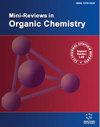漆酶辅助农药生物修复:范围和挑战
IF 1.9
4区 化学
Q2 CHEMISTRY, ORGANIC
引用次数: 0
摘要
漆酶(苯二醇);氧氧化还原酶;ec .1.10.3.2)是一种多铜氧化酶,是一种已知的木质素降解酶,可以催化大量的底物,从酚类、非酚类化合物、芳香胺、二胺、杂环化合物到有机/无机金属化合物等,只要它们没有太高的氧化还原电位。尽管有许多产生漆酶的生物,如细菌、昆虫、植物和动物,但白腐丝状真菌是这种酶的最佳制造者。在漆酶存在的情况下,各种化学成分的农药(杀菌剂、除草剂、杀虫剂等)(有机磷、有机氯、氨基甲酸酯、除虫菊酯和拟除虫菊酯等)被氧化到水中,分子氧的四个电子以不同的效率间接还原。在各种天然或合成介质的存在下,生物修复效率可以提高,如ABTS、紫尿酸、1-羟基苯并三唑、香兰素、丁香醛、聚乙二醇等。固定化漆酶在各种载体材料上增加了酶的稳定性、可靠性和可重复使用性,特别是在工业过程中。本文综述了该生物催化剂的结构、催化循环、氧化的一般机理,以及该生物催化剂降解农药的各种范围和挑战,以期实现绿色可持续发展。本文章由计算机程序翻译,如有差异,请以英文原文为准。
Laccase-assisted bioremediation of pesticides: Scope and challenges
Laccase (Benzenediol: oxygen oxidoreductase; E.C.1.10.3.2), a multicopper oxidase that is a known lignin-degrading enzyme, can catalyse an ample array of substrates, from phenolic, non-phenolic compounds, aromatic amines, diamines, heterocyclic compounds to organic/inorganic metal compounds etc., bestowed they have not too high redox potentials. Despite many laccase-producing organisms like bacteria, insects, plants, and animals, white rot filamentous fungi are the best producers of this enzyme. In the presence of laccase, pesticides (fungicides, herbicides, insecticides, etc.) of various chemical compositions (organophosphates, organochlorines, carbamates, pyrethrin & pyrethroids etc.) are oxidized into the water with collateral reduction of four electrons of molecular oxygen with various efficiencies. Bioremediation efficiency can be increased in the presence of various natural or synthetic mediators, viz. ABTS, violuric acid, 1- hydroxy benzotriazole, vanillin, syringaldehyde, PEG, etc. Immobilized laccase on various supporting materials increased the enzyme's stability, reliability, and reusability for continuous application, particularly for industrial processes. The present review discusses the structure, catalytic cycle, general mechanism of oxidation, and various scopes and challenges of pesticide degradation by this multifaceted biocatalyst which could lead to a green sustainable environment.
求助全文
通过发布文献求助,成功后即可免费获取论文全文。
去求助
来源期刊
CiteScore
4.50
自引率
4.30%
发文量
116
审稿时长
>12 weeks
期刊介绍:
Mini-Reviews in Organic Chemistry is a peer reviewed journal which publishes original reviews on all areas of organic chemistry including organic synthesis, bioorganic and medicinal chemistry, natural product chemistry, molecular recognition, and physical organic chemistry. The emphasis will be on publishing quality papers very rapidly, without any charges.
The journal encourages submission of reviews on emerging fields of organic chemistry including:
Bioorganic Chemistry
Carbohydrate Chemistry
Chemical Biology
Chemical Process Research
Computational Organic Chemistry
Development of Synthetic Methodologies
Functional Organic Materials
Heterocyclic Chemistry
Macromolecular Chemistry
Natural Products Isolation And Synthesis
New Synthetic Methodology
Organic Reactions
Organocatalysis
Organometallic Chemistry
Theoretical Organic Chemistry
Polymer Chemistry
Stereochemistry
Structural Investigations
Supramolecular Chemistry

 求助内容:
求助内容: 应助结果提醒方式:
应助结果提醒方式:


